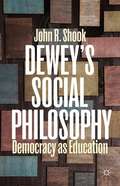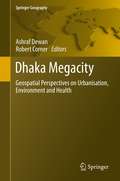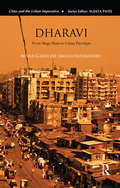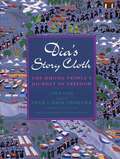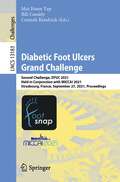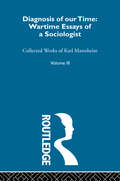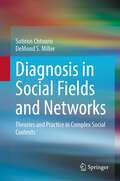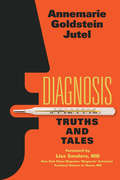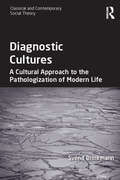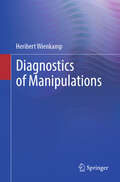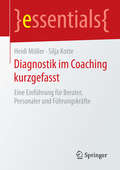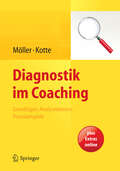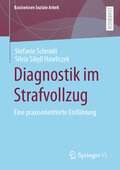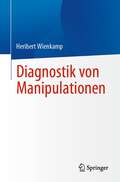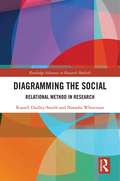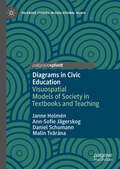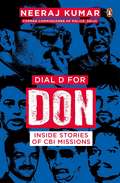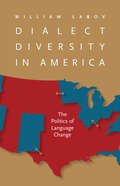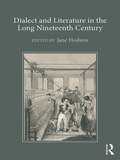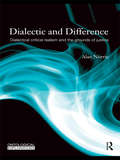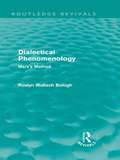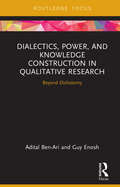- Table View
- List View
Dewey�s Social Philosophy
by John R. ShookDewey advanced a political vision for democracy as a form of deliberative polyarchy grounded in community ethics. This vision depicts citizens engaged in communal exercises in experimental civic education. This ethical project, to successfully pervade all of democratic society must be revolutionarily comprehensive. Maintaining the civil peace, a productive economy, a participatory citizenry, an effective penal system, and a religiously harmonious society are top democratic priorities. The economy needs employees and entrepreneurs who are more broadly educated, not merely well-trained; education is so crucial for empowerment that it must be a civic guarantee; education should be prioritized in law and criminal justice; and education is crucial for ethical communities embracing religious pluralism. Dewey's core views on humanity's capacities for learning, socializing, problem-solving, self-ruling, and flourishing forge a whole far greater than its parts. His progressive revolution is yet to be realized, but his philosophy remains just as insightful and relevant as ever.
Dhaka Megacity: Geospatial Perspectives on Urbanisation, Environment and Health
by Ashraf Dewan Robert CornerThe book Dhaka Megacity: Geospatial Perspectives on Urbanisation, Environment and Health presents the use of geospatial techniques to address a number of environmental issues, including land use change, climatic variability, urban sprawl, population density modelling, flooding, environmental health, water quality, energy resources, urban growth modelling, infectious diseases and the quality of life. Although the work is focused on the Megacity of Dhaka in Bangladesh, the techniques and methods that are used to research these issues can be utilized in any other areas where rapid population growth coupled with unplanned urbanization is leading to environmental degradation. The book is useful for people working in the area of Geospatial Science, Urban Geography, Environmental Management and International Development. Since the chapters in the book cover a range of environmental issues, this book describes useful tools for assisting informed decision making, particularly in developing countries.
Dharavi: From Mega-Slum to Urban Paradigm (Cities And The Urban Imperative Ser.)
by Marie-Caroline Saglio-YatzimirskyLocated in the heart of Mumbai, Dharavi is estimated to be the largest slum in Asia. Often referred to as ‘Little India’, it has been home to thousands of migrants from across the country providing opportunities for work and livelihood. As such, Dharavi presents a fascinating paradox: the convergence of stereotypes associated with the slum — poverty and misery — and an effervescent economic vitality, impelled by globalisation and international capital flows.Bringing together 20 years of painstaking fieldwork, this book reveals the social, economic, political, and urban complexities that define Dharavi beneath the shadow of Mumbai, the financial capital of India. It provides a rare account of the slum’s history, with a special focus on the original populace of leather workers — who form the backbone of its urban informal economy — their work, organisation and increasing political awareness. Dominated by a population of ex-‘untouchables’, conventionally stigmatised by poverty and low status, Dharavi illustrates how traditional caste-based occupational and regional divisions continue to be strong and affect structures of political governance and economy. At the same time, it testifies to an intimate encounter with consumerism, liberalisation and technological innovations, and its resultant cultural globalisation under the heady influence of media, advertising and cinema transmitted by the city of Mumbai.This book traces the mega-slum’s gradual transformation as a thriving trade centre, through an informal economy’s successful adaptation to global markets, in turn establishing an urban paradigm. It will be useful to those in sociology, anthropology, urban studies, politics, public policy and governance, and to those interested in globalisation, transnational migration and town planning.
Dhat Syndrome: Medical, Psychological and Sociocultural aspects
by S. M. Yasir Arafat Sujita Kumar Kar Vikas MenonDhat Syndrome is known as a culture-bound syndrome in South Asia. People with Dhat Syndrome often present with anxiety and distress related to semen loss. Multiple somatic and sexual symptoms often accompany this. The symptoms of Dhat Syndrome closely resemble other neurotic and stress-related disorders. Myths related to sexuality are often the core phenomenon in dhat syndrome, which is responsible for the generation of psychopathology—addressing the myth's preliminary results in resolving psychopathology. However, many patients require pharmacological and psychological management. Due to strong cultural beliefs and associated myths, patients with Dhat Syndrome often reach out to traditional healers before getting the proper psychiatric consultation, further consolidating their myths and poor attitude toward treatment. However, Dhat Syndrome resembles a male entity; a similar entity is reported in females, where females attribute their non-pathological vaginal discharge to psychological distress. The pattern of symptoms has a significant resemblance with Dhat Syndrome in males. There is no standard book that exclusively discusses various aspects of Dhat Syndrome. This book examines the evolution of Dhat Syndrome to the current understanding of the disease and its management. Hence, this book will be unique and helpful for this disorder.
Dia's Story Cloth
by Dia ChaThe story cloth made for the author by her aunt and uncle chronicles the life of the Hmong people in their native Laos and their eventual emigration to the United States.
Diabetic Foot Ulcers Grand Challenge: Second Challenge, DFUC 2021, Held in Conjunction with MICCAI 2021, Strasbourg, France, September 27, 2021, Proceedings (Lecture Notes in Computer Science #13183)
by Moi Hoon Yap Bill Cassidy Connah KendrickThis book constitutes the Second Diabetic Foot Ulcers Grand Challenge, DFUC 2021, which was held on September 27, 2021, in conjunction with the 24th International Conference on Medical Image Computing and Computer-Assisted Intervention, MICCAI 2021. The challenge took place virtually due to the COVID-19 pandemic.The 6 full papers included in this book were carefully reviewed and selected from 14 submissions. There is also an overview paper on the challenge and datasets and one summary paper of DFUC 2021.
Diagnosis Of Our Time V 3
by Karl MannheimFirst published in 1943. Routledge is an imprint of Taylor & Francis, an informa company.
Diagnosis in Social Fields and Networks: Theories and Practice in Complex Social Contexts
by DeMond S. Miller Sotirios ChtourisContaining a novel compilation of theoretical and methodological approaches, this textbook lays out the most relevant foundations of clinical sociology. Relying heavily on well-recognized medical models and concepts to help communicate ideas (e.g. treatment, diagnosis, clinical, cure), the methods of social diagnosis and social therapy presented in this book will help in better and socially informed protection of vulnerable individuals and citizens as well as an informed design of protection policies for macro, meso and micro levels of society. The book explains that many problems, perceived as economic, psychological-individual, and political, are rooted in social functions and structures of the wider society, and how these social structures and functions interact in everyday life. Through the application of the theoretical and methodological approaches in case studies on recent issues, such as the Covid pandemic, or the Hurricane Katrina disaster, the book will allow readers to easily cope with the complexity of clinical sociology and to develop clinical competencies and pertinent training. This renders the book not only highly useful for advanced undergraduate and graduate students of clinical and applied sociology but also for the preparation of courses for theoretically informed practitioners who are keen to work by defining learning objectives and learning paths.
Diagnosis: Truths and Tales
by Annemarie JutelThe announcement of a serious diagnosis is a solemn moment when directions shift, priorities change, and life appears in sharper focus. It is also a moment when a story takes shape. It is a story we are able to imagine, even if we haven’t experienced it firsthand, because the moment of diagnosis is as pervasive in popular media as it is in medicine. Diagnosis: Truths and Tales shares stories told from the perspectives of those who receive diagnoses and those who deliver them. Confronting how we address illness in our personal lives and in popular culture, this compelling book explores narratives of diagnosis while pondering the impact they have on how we experience health and disease.
Diagnostic Cultures: A Cultural Approach to the Pathologization of Modern Life (Classical and Contemporary Social Theory)
by Svend BrinkmannSome studies estimate that each year, around a quarter of the population of Western countries will suffer from at least one mental disorder. Should this be interpreted as evidence for the progress of psychiatry, a discipline that is now able to identify and treat mental illnesses that have always existed, or might it be the case that modern life somehow creates new conditions, or social pathologies? This book argues that in fact something more fundamental has been taking place in recent years: the development of diagnostic cultures. Taking account of the phenomenon of patients themselves 'pushing for' pathologization - and acknowledging therefore that this is not simply a case of psychiatry pursuing an agenda of 'medicalisation from above' - this volume examines the emerging trend towards interpreting our sufferings in terms of psychiatric conceptions and diagnostic categories. Drawing on new empirical case studies of psychological diagnoses, including depression and ADHD, and employing both cultural-psychological and sociological analyses, it charts the development of contemporary diagnostic cultures and asks whether, in transforming existential, moral and political concerns into individual psychiatric disorders, we risk losing sight of the larger historical and social forces that affect our lives. A ground-breaking examination of the shift towards the pathologization of suffering and the dangers that this presents to human self-understanding, Diagnostic Cultures will be of interest to scholars of social theory and philosophy, the sociology of culture, psychology and the sociology health and medicine.
Diagnostics of Manipulations
by Heribert WienkampManipulations are encountered "at every turn" and in countless everyday situations. If this is the case, the (early) recognition of manipulations takes absolute precedence. This is especially true for specialists regarding their diagnostics and analysis. In everything that is presented and offered in verbal expressions, the tentative differentiation between fiction and truth is the focus of the events. Because only a reasonably complete and truthful outline of the problem contains the potential for gaining insight or uncovering lies or half-truths. Lies, deceptions, excuses, etc., are manipulative activities or reactions that are intended to create a different, namely consciously false impression. However, manipulative maneuvers can be observed and require further investigation not only in interpersonal situations but also in larger social contexts or systems, for example, to successfully play games like chess or to solve problems through regulations accepted by all. This publication could particularly benefit the following target groups: executives, HR experts in academia and practice, and specialists who need to assess the credibility of statements based on "fiction and truth" or who are involved in other support mandates.
Diagnostik im Coaching kurzgefasst: Eine Einführung für Berater, Personaler und Führungskräfte (essentials)
by Heidi Möller Silja KotteDieses essential erläutert zunächst den Begriff der ,,Diagnostik" im Rahmen von Coaching und diskutiert die Notwendigkeit einer systematischen Eingangsdiagnostik. Die Autorinnen nennen die Unterschiede, die es beim diagnostischen Vorgehen im Coaching je nach theoretischer Perspektive oder ,,Coachingschule" gibt, und erörtern schulenspezifische Besonderheiten. In der Coachingdiagnostik müssen über die individuelle Ebene hinaus auch die Ebenen Rolle, Team und Organisation des Coachee berücksichtigt werden. Für diese verschiedenen Ebenen werden beispielhaft jeweils konkrete diagnostische Verfahren dargestellt. Heidi Möller und Silja Kotte stellen zudem eine Systematik zur Einordnung des diagnostischen Vorgehens im Coaching vor (Kasseler Coaching Inventar) und geben Praktikern eine Systematik für das Erstgespräch (Kasseler Coaching Raster) an die Hand.
Diagnostik im Coaching: Grundlagen, Analyseebenen, Praxisbeispiele
by Heidi Möller and Silja KotteDer Erfolg von Coaching – also der berufsbezogenen Einzelberatung von Führungskräften, Verantwortungsträgern und Selbständigen – hängt nicht nur vom Einsatz geeigneter Coaching-Tools, der Beratungskompetenz des Coaches etc. ab. – Für ein erfolgreiches Coaching ist es mindestens ebenso wichtig, zu Beginn des Prozesses die Ausgangssituation und Ziele des Klienten, seines Teams sowie der gesamten Organisation „sauber“ zu erfassen. Diagnostische Kompetenz und die Durchführung einer systematischen Diagnostik werden heute als zentrale Wirkfaktoren im Coaching benannt.Dieser Sammelband mit Beiträgen anerkannter Experten bietet erstmals eine systematische Darstellung diagnostischer Zugänge und Analyse-Ebenen im Coaching: Neben diagnostischen Ansätzen unterschiedlicher theoretischer Hintergründe (u.a. psychometrische, projektive, kreative, verhaltensorientierte) werden relevante Analyseebenen (Person, Rolle, Team, Organisation) erläutert sowie konkrete Verfahren vorgestellt. Der Band endet mit einer zusammenfassenden Systematisierung. – Wissenschaftlich fundiert und doch nah an den Anforderungen der Praxis – durch Checklisten und Fallbeispiele.Dieses Buch ist eine grundsätzliche Bereicherung für den Wissensschatz von Coaches, Beratern und Trainern: Stellen Sie Ihren Coaching-Prozess auf ein solides Fundament – entwickeln Sie Ihre diagnostische Kompetenz!
Diagnostik im Strafvollzug: Eine praxisorientierte Einführung (Basiswissen Soziale Arbeit #7)
by Stefanie Schmidt Silvia Sibyll HawliczekDas Lehrbuch ist eine praxisnahe Einführung in das Arbeitsfeld und die methodischen Herangehensweisen der Diagnostik im Strafvollzug. Es richtet sich zuvorderst an Psychologinnen und Psychologen sowie Sozialarbeiterinnen und Sozialarbeiter, die im Rahmen ihrer Tätigkeit im Justizvollzug mit diagnostischen Einschätzungen betraut sind sowie Studierende dieser Fächer. Nach einer Einführung in die Aufgaben und Rahmenbedingungen, die Diagnostik im Strafvollzug berühren, werden zwei verschiedene Modelle zur Rehabilitation straffälliger Personen (Risk-Need-Responsivity und Good Lives Model) vorgestellt, die der Diagnostik im Strafvollzug einen theoretischen Rahmen geben. Daran anknüpfend führt das Lehrbuch in unterschiedliche Methoden ein, welche den diagnostischen Urteilsprozess strukturieren. Diese Grundlagen münden schließlich in ein stärker praxisorientiertes Kapitel, in dem der Prozess der Urteilsbildung anhand zahlreicher Beispiele schrittweise vorgestellt wird.
Diagnostik von Manipulationen
by Heribert WienkampManipulationen begegnen uns auf „Schritt und Tritt“ und in unzähligen alltäglichen Situationen. Wenn dem so ist, hat das (frühzeitige) Erkennen von Manipulationen absoluten Vorrang.Dies gilt erst recht bei Fachexperten bezüglich ihrer Diagnostik und Analyse. Bei allem, was an verbalen Äußerungen aufgetischt und angeboten wird, steht die versuchsweise Differenzierung zwischen Dichtung und Wahrheit im Focus des Geschehens. Denn nur eine einigermaßen vollständige und wahrheitsgetreue Problemskizze birgt das Potenzial zur Erkenntnisgewinnung bzw. zur Entlarvung von Lügen oder Halbwahrheiten. Lügen, Täuschungen, Ausreden usw. sind manipulative Aktivitäten oder Reaktionen, die einen anderen, nämlich bewusst falschen Eindruck erzeugen sollen. Aber nicht nur in interpersonellen Situationen, sondern auch in größeren sozialen Zusammenhängen oder Systemen sind manipulative Manöver festzustellen und genauer zu erforschen, um z.B. Spiele wie das Schachspiel erfolgreich zu absolvieren oder Probleme durch von allen akzeptierte Regelungen zu lösen.Von dieser Publikation könnten als Zielgruppen besonders profitieren: Führungskräfte, Personalexperten in Wissenschaft und Praxis und Spezialisten, die entweder die Glaubwürdigkeit von Aussagen auf „Dichtung und Wahrheit“ zu beurteilen haben oder sonstigen Betreuungsmandaten nachgehen.
Diagrammatic Representation and Inference: 14th International Conference, Diagrams 2024, Münster, Germany, September 27 – October 1, 2024, Proceedings (Lecture Notes in Computer Science #14981)
by Richard Burns Emmanuel Manalo Jens Lemanski Petrucio Viana Mikkel Willum Johansen Reetu BhattacharjeeThis book constitutes the refereed proceedings of the 14th International Conference on the Theory and Application of Diagrams, Diagrams 2024, held in Münster, Germany, during September 27–October 1, 2024. The 17 full papers, 19 short papers and 11 papers of other types included in this book were carefully reviewed and selected from 69 submissions. They were organized in topical sections as follows: Keynote Talks; Analysis of Diagrams; Euler and Venn Diagrams; Diagrams in Logic; Diagrams and Applications; Diagram Tools; Historical Aspects of Diagrams; and Posters.
Diagramming the Social: Relational Method in Research (Routledge Advances in Research Methods)
by Natasha Whiteman Russell Dudley-SmithThis book challenges the hyper-production and proliferation of concepts in modern social research. It presents a distinctive methodological response to this tendency through an exploration of one of the most underappreciated yet widely deployed conventions for the analysis of social processes: the creation of diagrammatic relational spaces. Designed to capture social processes in a way that resists reductive and essentialist categories, such spaces have the capacity to produce powerful, systematic analyses that break the spell of concept proliferation and its resultant naively realist approach to explaining the world. Through an exploration of key examples and series of original case studies, the authors demonstrate the application of this approach across a variety of empirical settings and academic disciplines. They thus offer a relational and pragmatic approach to social research that resists current trends characterised by supposedly self-evident data and/or disconnected theory. As such, the book constitutes an important contribution to some of the central questions in current social research, and promises to unsettle and reinvigorate considerations of method across different fields of practice.
Diagrams in Civic Education: Visuospatial Models of Society in Textbooks and Teaching (Palgrave Studies in Educational Media)
by Janne Holmén Daniel Schumann Ann-Sofie Jägerskog Malin TvärånaThis book presents the findings of three studies on the use of diagrams in civic education. The first study presents an international comparison of textbook diagrams promoting national unity in diversity, with examples from ten countries. The second focuses on the depiction of migration in diagrammatic form in German textbooks, The final study was conducted in collaboration with teachers in Swedish social science classrooms, and focuses on teaching comprehension of flow charts and scatterplots. The book will be of interest to scholars of educational media, didactics, the history of education and citizenship education.
Dial D For Don: Inside Stories Of Cbi Missions
by Neeraj KumarMumbai had a series of bomb blasts in March 1993. The mastermind, Dawood Ibrahim, behind these terror attacks is not known to many. The don wanted to surrender himself and prove his innocence. In 1999 the first case of match fixing banned 6 top Indian cricketers from playing. In January 2002, a Dubai based don, responsible for kidnapping a shoe barren was arrested and he was about to escape Dubai on a forged passport to Pakistan. All these cases involved the deep investigator skills of an Indian Police Officer, Neeraj Kumar, who was then serving in the CBI. The book 'Dial D for Don: Inside Stories of CBI Case Missions’ covers several high profile cases solved by him including the arrest of Aftaab Ansari, the main accused in the shooting at the American Center in Kolkata, nabbing of Punjab CM Beant Singh’s assassin, Jagtar Singh Tara. Arrest of Romesh Sharma, a Dawood henchman masquerading as a Delhi based Politician. Neeraj Kumar successfully handled cases spanning continents working closely with agencies like FBI, Interpol and Scotland Yard.
Dialect Diversity in America: The Politics of Language Change (Page-Barbour Lectures)
by William LabovThe sociolinguist William Labov has worked for decades on change in progress in American dialects and on African American Vernacular English (AAVE). In Dialect Diversity in America, Labov examines the diversity among American dialects and presents the counterintuitive finding that geographically localized dialects of North American English are increasingly diverging from one another over time. Contrary to the general expectation that mass culture would diminish regional differences, the dialects of Los Angeles, Dallas, Chicago, Birmingham, Buffalo, Philadelphia, and New York are now more different from each other than they were a hundred years ago. Equally significant is Labov's finding that AAVE does not map with the geography and timing of changes in other dialects. The home dialect of most African American speakers has developed a grammar that is more and more different from that of the white mainstream dialects in the major cities studied and yet highly homogeneous throughout the United States.Labov describes the political forces that drive these ongoing changes, as well as the political consequences in public debate. The author also considers the recent geographical reversal of political parties in the Blue States and the Red States and the parallels between dialect differences and the results of recent presidential elections. Finally, in attempting to account for the history and geography of linguistic change among whites, Labov highlights fascinating correlations between patterns of linguistic divergence and the politics of race and slavery, going back to the antebellum United States. Complemented by an online collection of audio files that illustrate key dialectical nuances, Dialect Diversity in America offers an unparalleled sociolinguistic study from a preeminent scholar in the field.
Dialect and Literature in the Long Nineteenth Century
by Jane HodsonThe nineteenth century witnessed a proliferation in the literary uses of dialect, with dialect becoming a key feature in the development of the realist novel, dialect songs being printed by the hundreds in urban centres and dialect poetry becoming a respected form. In this collection, scholars from a wide variety of disciplines, including dialectology, literary linguistics, sociolinguistics, literary studies and the history of the English language, have come together to examine the theory, context and ideology of the use of dialect in the nineteenth century. The texts considered range from the Cumberland poetry of Josiah Relph to the novels of Frances Trollope and Elizabeth Gaskell, and from popular Tyneside song to the dialect poetry of Alfred Tennyson. Throughout the volume, the contributors debate whether or not 'authenticity' is a meaningful category, the significance of metalanguage and paratext in the presentation of dialect, the differences between 'literary dialect' and 'dialect literature', the responses of 'insider' versus 'outsider' audiences and whether the representation of dialect is a hegemonic or resistant strategy. This is the first book to focus on practices of dialect representation in literature in the nineteenth century. Taken together, the chapters offer an exciting overview of the challenging work currently being undertaken in this field.
Dialectic and Difference: Dialectical Critical Realism and the Grounds of Justice
by Alan NorrieDialectic and Difference is the first systematic exploration of Roy Bhaskar’s dialectical philosophy and its implications for ethics and justice. That philosophy has three aims: a dialecticisation of original critical realism, a ‘critical realisation’ of dialectic, and a metacritique of western philosophy. In the first, real absence or negativity links structured being to dialectical becoming in a dynamic world. The second draws on Marx to locate the critical impulse in Hegel’s dialectic in a material, open and changing totality. The third identifies a central problem in western philosophy from the Greeks on, the failure to think real negativity as the essence of change (‘ontological monovalence’). Bhaskar’s ethics connect basic human ontology with universal principles of freedom and solidarity. He marries (‘constellates’) these with a grasp of how principles are historically shaped. His account of freedom moves from the infant’s ‘primal scream’ to the eudaimonic society, but thinks the limits to freedom under modern conditions. The morally real in ethics and justice is displaced and reconfigured as relations between ‘the ideal’ and ‘the actual’. Western philosophy systematically denies the real negativity that drives Bhaskar’s dialectic. Metacritique traces this to Parmenides and Plato’s account of non-being as difference. It enables a critique of the poststructural radicalisation of difference via Nietzsche and the doctrine of ‘Heraclitan flux’. Mobilised as ‘the other’ of Plato’s Forms, this remains a move on Platonic terrain. It too denies real negativity in structured being as the ground of historical change and moral praxis. This text is essential reading for all serious students of social theory, philosophy, and legal theory.
Dialectic of Enlightenment in the Anglosphere: Horkheimer and Adorno's Remnants of Freedom
by Howard ProsserThis book explores the reception of Max Horkheimer and Theodor W. Adorno’s Dialectic of Enlightenment. It examines a variety of perspectives on the text, supplied by e.g. American critical theorists, British New Leftists, Transatlantic Cultural Studies scholars, Postmodernists, and those working in the current after-theory moment from 1970 to 2010. It considers the works of the Frankfurt School, especially Horkheimer and Adorno, alongside the secondary literature on the subject. The main focus is on how various intellectual circles and trends have responded to the Dialectic, making scholarly discussions the primary sources. While the work is a history of the Dialectic of Enlightenment’s Anglophone reception, it also reflects the post-1968 left’s retreat to academia, which echoes the Frankfurt School’s own stance of political resignation.
Dialectical Phenomenolgy: Marx's Method (Routledge Revivals)
by Roslyn Wallach BologhIn this inquiry into Marx’s method of theorising, originally published in 1979, Roslyn Bologh analyses theory in the same way that Marx analyses the production of capital, and provides a set of rules for reproducing Marx’s method. The rules are developed through an examination of the Grundrisse, a text by Marx that combines his technical critique of political economy with his humanistic, philosophical concerns and his historical perspective. Dr Bologh concludes that Marx’s method, as dialectical phenomenology, offers a way of analysing language, knowledge and the social relations and practices of everyday life, as well as the more obvious phenomena of capitalism.
Dialectics, Power, and Knowledge Construction in Qualitative Research: Beyond Dichotomy (Routledge Advances in Research Methods)
by Adital Ben-Ari Guy EnoshThis book is about going beyond dichotomy. The research literature in social sciences is full of apparent dichotomies such as the dichotomy between: qualitative and quantitative approaches; "reality" and "multiple-realities"; ontology and epistemology; researchers and participants; the right and wrong conduct of research; and sometimes even between the goals of research and the ethics of research. Throughout the book, it is shown that adopting a dialectical approach, which attempts to integrate apparent contradictions and opposites at a higher level of abstraction, may serve as a way out of the twin horns of such dilemmas. To begin this journey, the authors start with the classical dilemma of the relationship between "reality" and "knowledge", as a common divide between the quantitative and qualitative epistemological paradigms, and the philosophical assumptions underlying them. To illustrate the understanding of the relationship between knowledge and reality, metaphors of "maps and territories" are used as a framework for the dialectical construction of knowledge. This book will be valuable to a diverse readership, including scholars interested in epistemology and philosophy of science and research methods, mainly from qualitative traditions. It will also be of interest to quantitative researchers as well, including supervisors of graduate students, lecturers and, most importantly, students and researchers-to-be.
